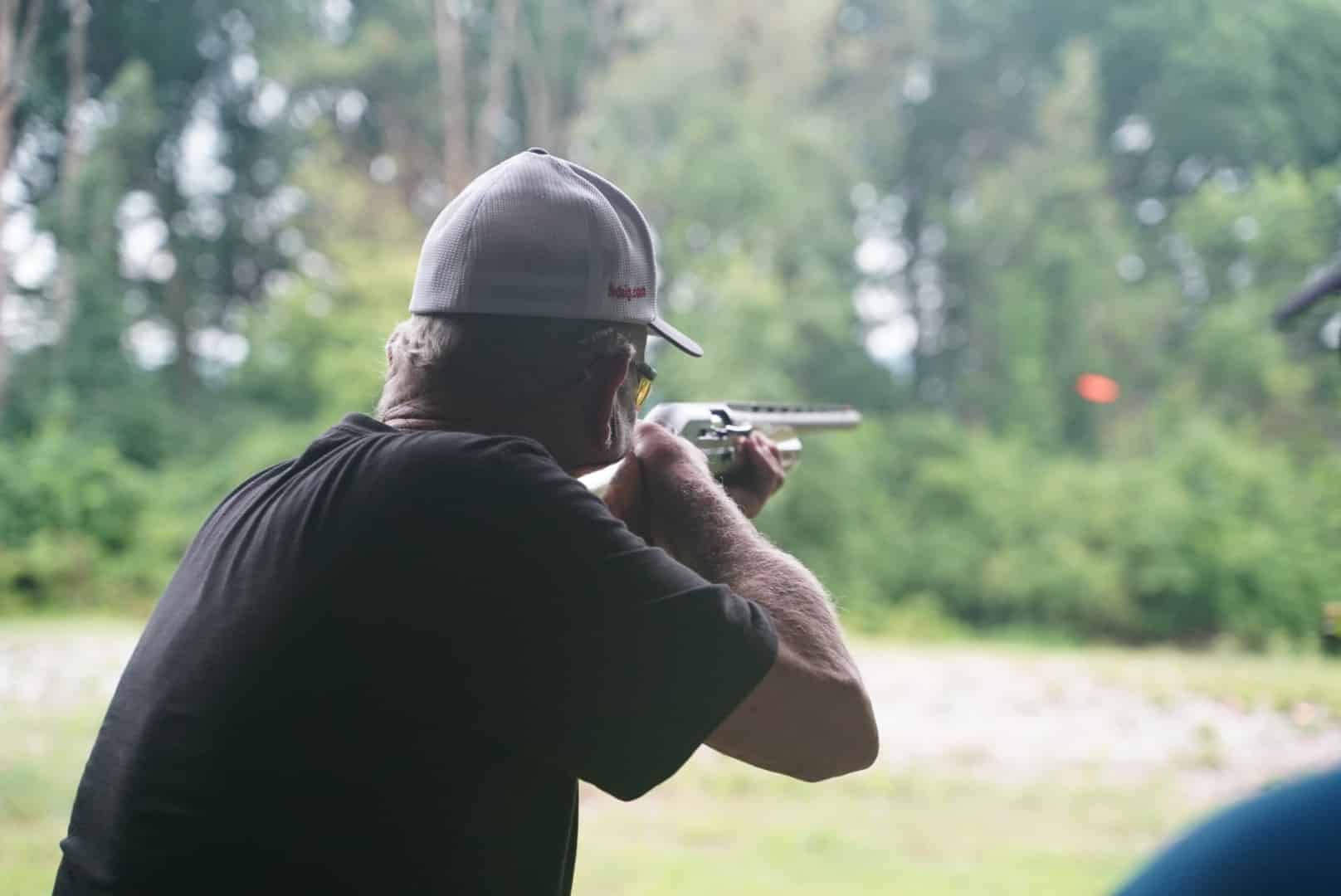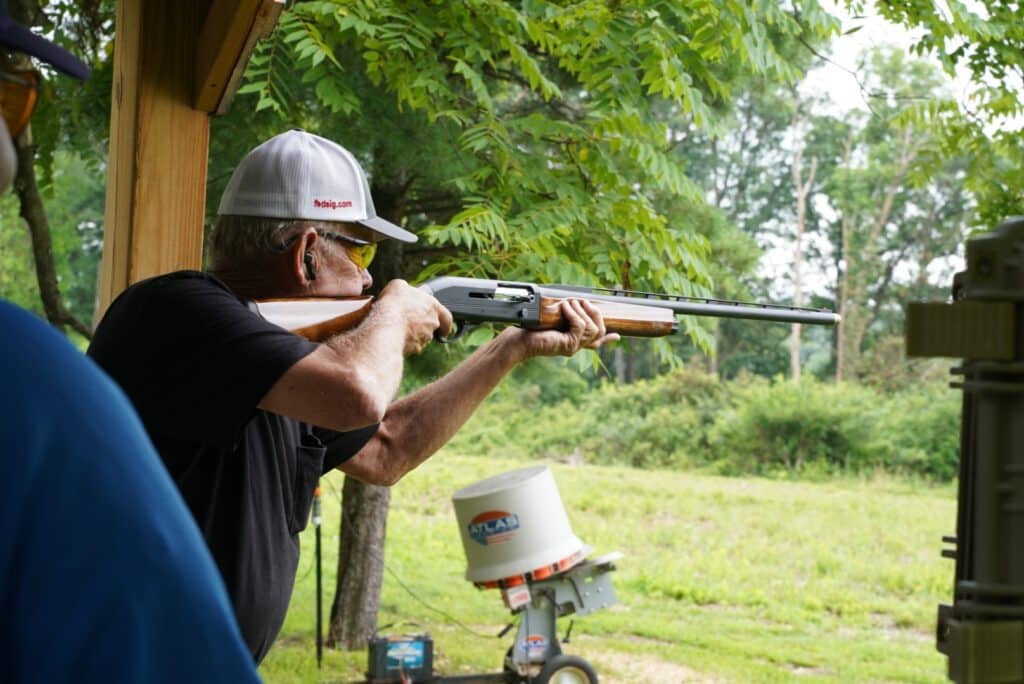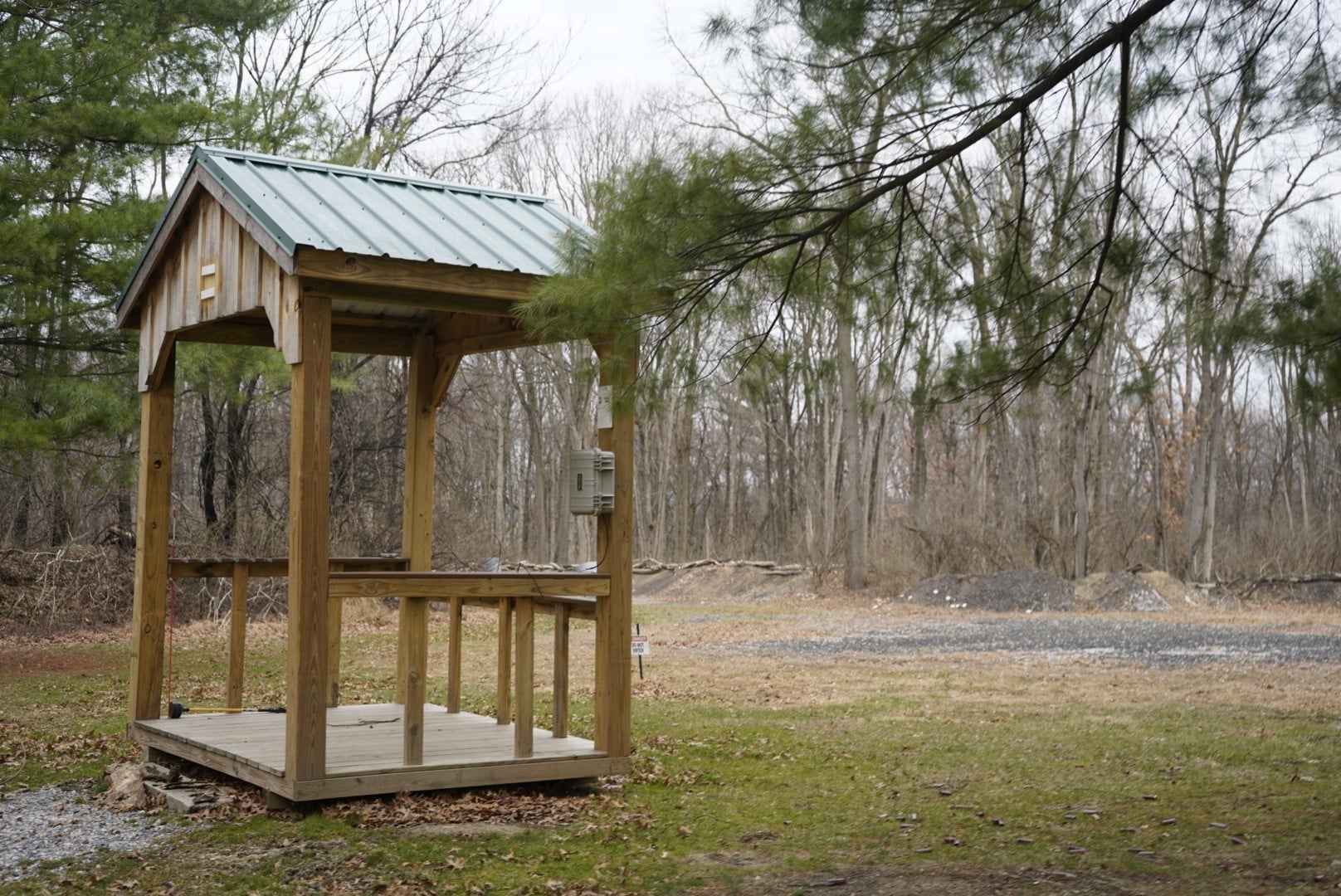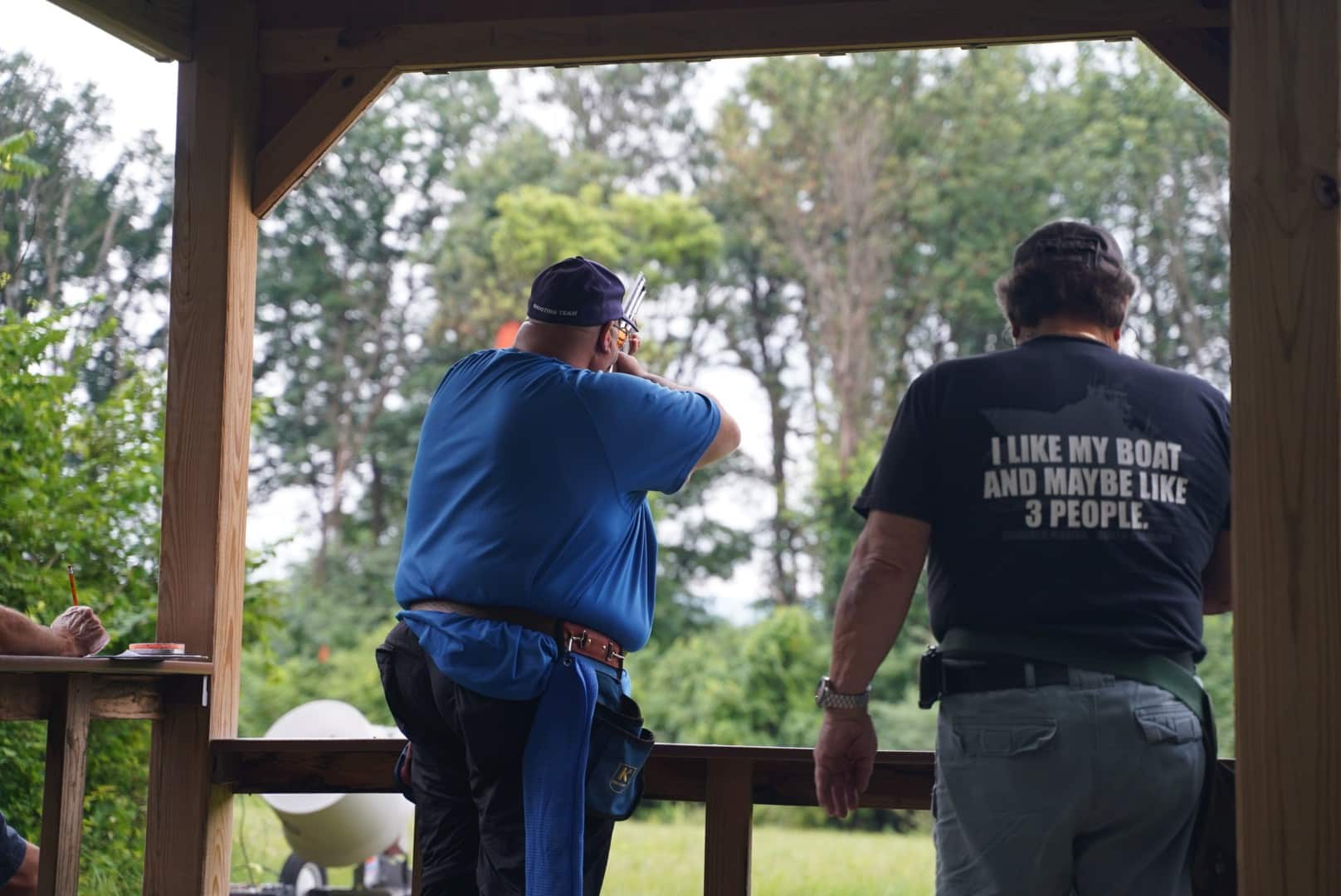
Many shotgun shooters struggle with inconsistent accuracy and poor target acquisition during their shooting sessions. This guide breaks down the three essential elements of shotgun technique: stance, gun mount, and swing mechanics to help shooters develop better control and balance. Master these basics and watch your shooting scores improve dramatically.
Stance: The Foundation of Shotgun Shooting
A proper stance is the foundation for consistent shotgun accuracy. Stand with your feet shoulder-width apart, placing your strong-side foot slightly back to create a balanced, athletic position.
Lean slightly forward from the waist, keeping about 60% of your weight on your front foot. This helps absorb recoil, maintain stability, and support smooth gun movement.
Adjust your stance as needed for different shooting angles and target presentations, pivoting with your lower body while keeping your gun mount steady. A strong stance not only improves control and balance but also enhances follow-through on every shot.
Mount: Aligning for Accuracy
While stance provides the foundation, the gun mount turns that base into precision. The mount is the moment the shotgun meets the shoulder and cheek, setting the sight picture that dictates accuracy.
Rushed mounts are a common cause of missed shots. The stock should settle into the same shoulder pocket every time, with the cheek making firm, consistent contact on the comb for proper sight alignment down the barrel.
This motion should be smooth and instinctive—one fluid movement where the eyes stay locked on the target. Both hands must work in sync: the support hand guiding the forend while the trigger hand controls the grip. Any unnecessary adjustment after the gun reaches the shoulder breaks the shot rhythm and affects accuracy.

Swing: Tracking and Hitting the Target
Swing mechanics form the heart of successful shotgun shooting technique, turning static accuracy into dynamic target acquisition. Experienced shooters develop smooth, controlled movements that follow the target’s flight path while keeping proper gun control throughout the motion.
The swing begins with the eyes tracking the target, followed by the body rotating naturally from the hips and shoulders. Shooters must resist the urge to stop the gun at the moment of firing—a common mistake that leads to missed shots and poor follow-through.
Proper swing technique means maintaining consistent speed while leading the target by the correct distance. Clay shooters often practice specific swing patterns for different target presentations, building muscle memory through repetition and focused drills.
The key is to keep the gun moving smoothly through the shot, with the trigger pull happening as part of that continuous motion—not as a separate step. Maintaining swing rhythm also helps manage recoil, making it easier to recover quickly for accurate follow-up shots during wing shooting.
Putting It Together: Practice and Refinement
Mastering swing mechanics creates the foundation for consistent target acquisition. Shooters combine stance, mount, and swing into one fluid motion through dedicated practice.
- Start with dry-fire practice at home to build muscle memory for proper gun mount and body alignment without ammunition costs.
- Practice mounting the shotgun 50 times daily while maintaining correct shooting posture and foot placement for automatic consistency.
- Use a mirror to check shooting form and ensure the gun comes to the same cheek position every time.
- Begin with stationary clay targets to perfect stance adjustment and basic shotgun technique before moving to crossing shots.
- Focus on one fundamental at a time during practice sessions rather than trying to fix multiple shooting issues at once.
- Record practice sessions on video to identify flaws in swing mechanics and body alignment that feel correct but look wrong.
- Shoot different target angles to develop versatile shotgun handling skills and improve overall marksmanship under varied conditions.
- Practice with an experienced shooter who can provide immediate feedback on shooting fundamentals and suggest specific improvements. Consider private shotgun lessons.
- Maintain consistent practice schedules because irregular training sessions slow down the development of proper firearm accuracy and muscle memory.
Conclusion
Mastering shotgun shooting isn’t about quick fixes—it’s about building repeatable fundamentals that work in any shooting situation. Stance creates stability, the mount locks in accuracy, and the swing delivers the shot. When these three elements flow together as one seamless motion, your shooting becomes instinctive rather than mechanical.
With regular practice on Wing Pointe’s sporting clays and 5-stand courses, you’ll mount faster, track smoother, and break more targets with confidence. Each visit helps refine your technique, reinforce muscle memory, and push your skills to the next level.
Stay patient, stay disciplined, and keep your focus on fundamentals. The more you train with intention, the more you’ll see your scores climb—and the more you’ll enjoy the satisfaction of watching clay targets break cleanly in mid-air.
Recent Posts

The Reopening of Keystone Clays as Wing Pointe Sporting Clays

How to Prepare for Your First Time Shooting Clays


